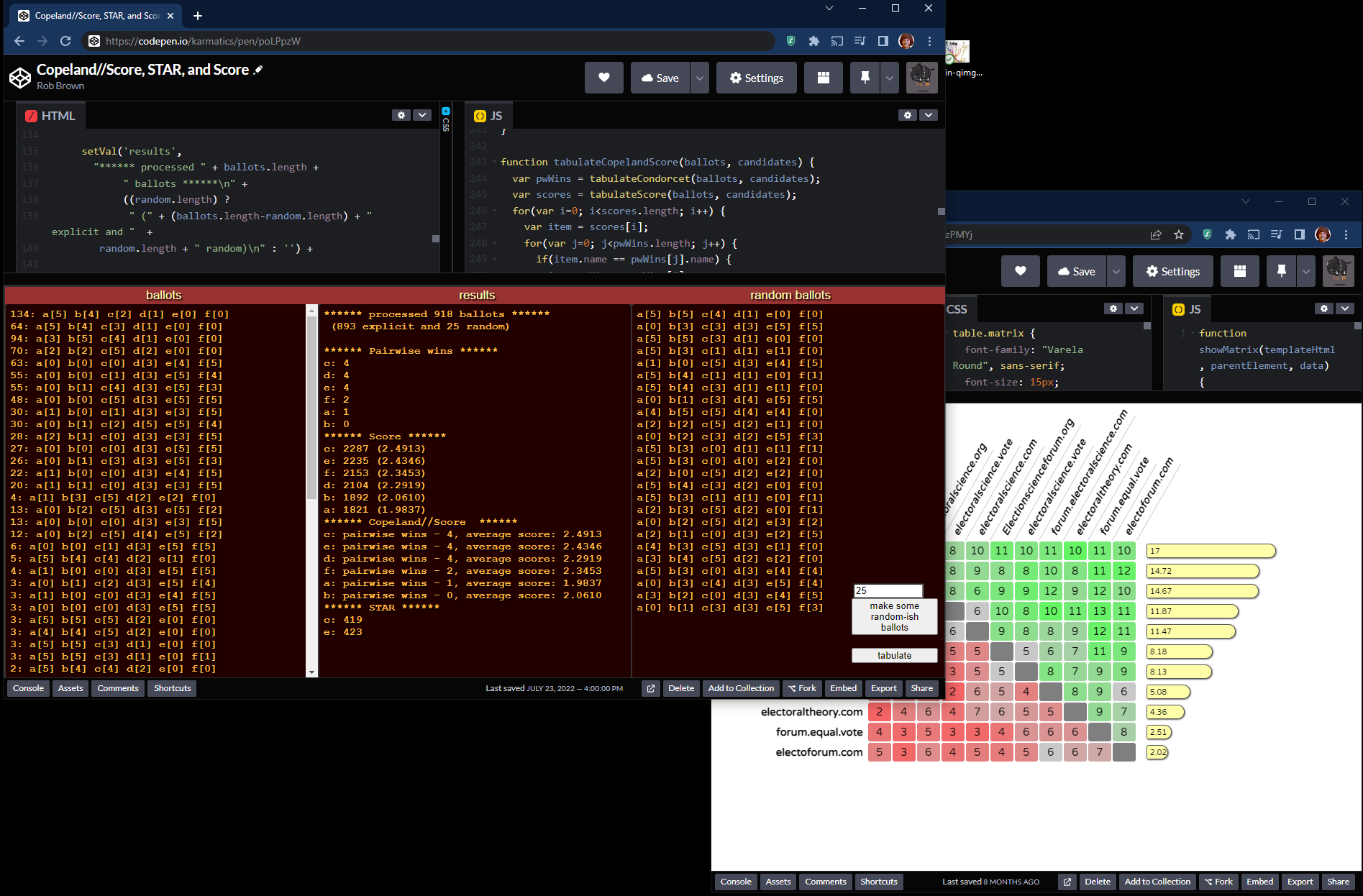Under what scenarios will the Smith set differ from Copeland set?
-
It seems to me that in the rare case of there not being a Condorcet winner, it would be unlikely that the Smith Set differs from the Copeland set.
Can anyone come up with an example ballot set where this is the case? (and what would you estimate the chances of this happening in a real world political election?)
-
Smith set: the smallest set of candidates such that each member defeats every candidate outside the set in a pairwise election
-
Copeland set: the set of candidates such that each member defeats more candidates than do those outside the set in a pairwise election
-
-
If your ballots make a majority graph like this:

Then the Copeland set is the top-left and top-right corner, but the Smith set is all four corners.
As for the probability of this happening, who can say. Probably ludicrously low. As far as I know, it's literally never happened, including in STV elections. Also note that the Copeland set will always be a subset of the Smith set.
-
1: A>B>C>D
1: B>C>D>A
1: C>D>A>BA beats B, B beats C and D, C beats A and D, and D beats A.
The Smith set is {A,B,C,D}, but the Copeland set is {B,C}.
This scenario is just the Condorcet triple, but with D being added as a clone of C.
I expect that in the real world, the most common Condorcet paradox would be the triple, since it is the simplest, so scenarios like this would be unlikely to occur, unless for some reason there was a reason to intentionally encourage clone-like candidates to run.
-
@marylander and @andy-dienes ... Thanks, very helpful.
And @marylander I noticed that you made a signature with your rated preferences! Cool! Hoping for more people to do so.
I don't know about your favorite Score - Sorted Margins (I don't see an electowiki page). Would you be interested in helping/advising so I can work it into my Codepens where I am trying to do a bunch of methods that use score-type ballots. (if you are a JS coder, feel free to fork it and add it yourself)

(edit: codepen plugin is broken, I can't even link to it)
Codepen: Copeland//Score, STAR, and Score -
@rob said in Under what scenarios will the Smith set differ from Copeland set?:
I don't know about your favorite Score - Sorted Margins (I don't see an electowiki page). Would you be interested in helping/advising so I can work it into my Codepens where I am trying to do a bunch of methods that use score-type ballots. (if you are a JS coder, feel free to fork it and add it yourself)
I think it was invented by @Ted-Stern. It uses score ballots. How it works is:
First, find both the total scores for each candidate, and the pairwise matrix for each candidate.
Candidates are seeded by their total score. For each adjacent pair of candidates in the ranking, we check whether their order in the ranking agrees with their pairwise matchup. If each pair agrees, then stop and take this as the final ranking. If at least one pair does not agree, select the pair with the smallest difference in score that disagrees and switch the candidates. Repeat until you end up with a ranking that has no disagreements between adjacent candidates. -
@marylander Thanks for the explanation. I'll comment on the thread Jack started.
-
@rob, Score Sorted Margins is mentioned on the Approval Sorted Margins page on electowiki.org as a variant.
Forest Simmons invented ASM, and I just extended it to scores.